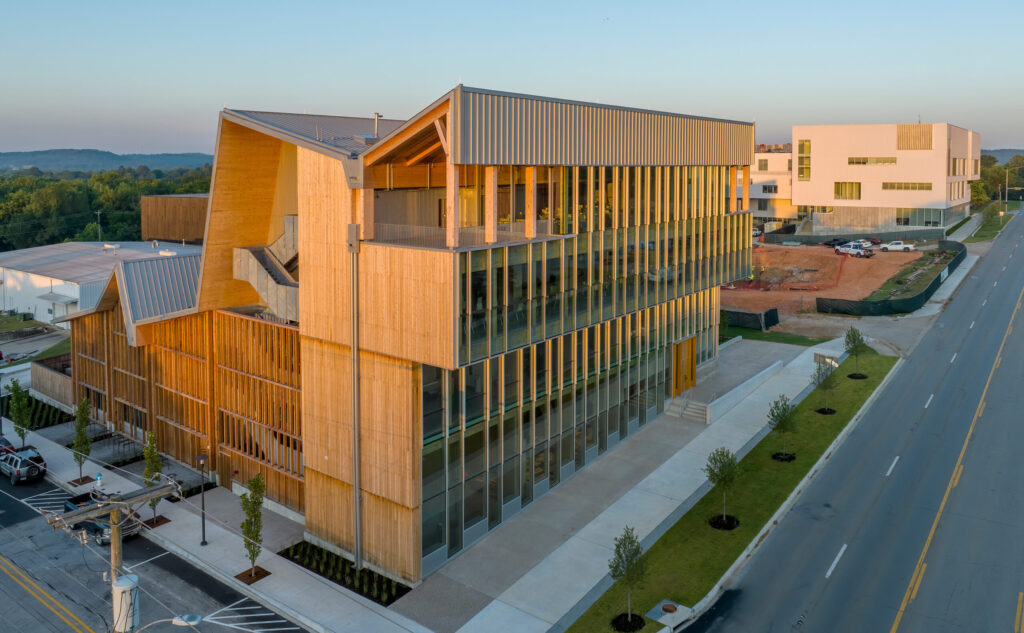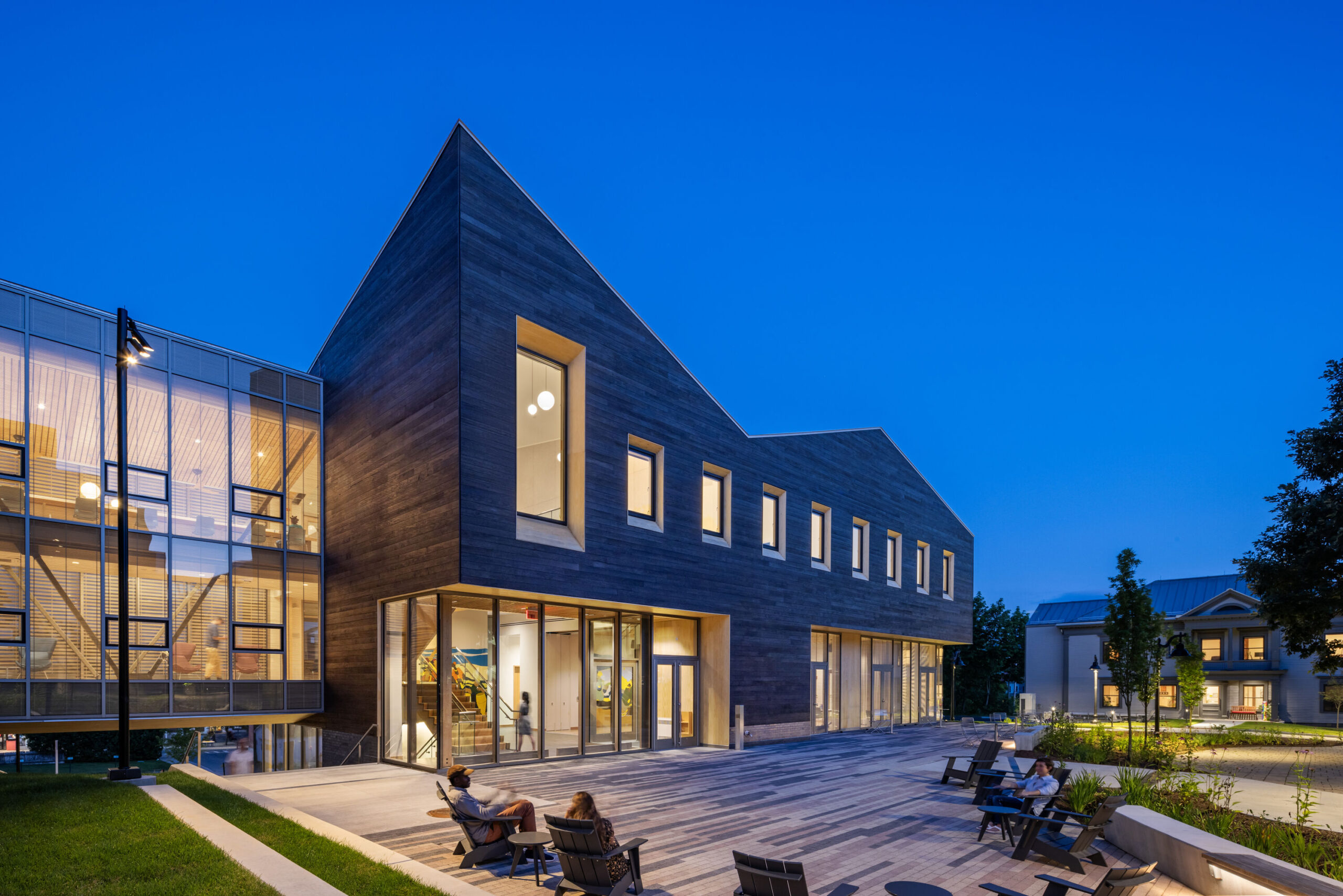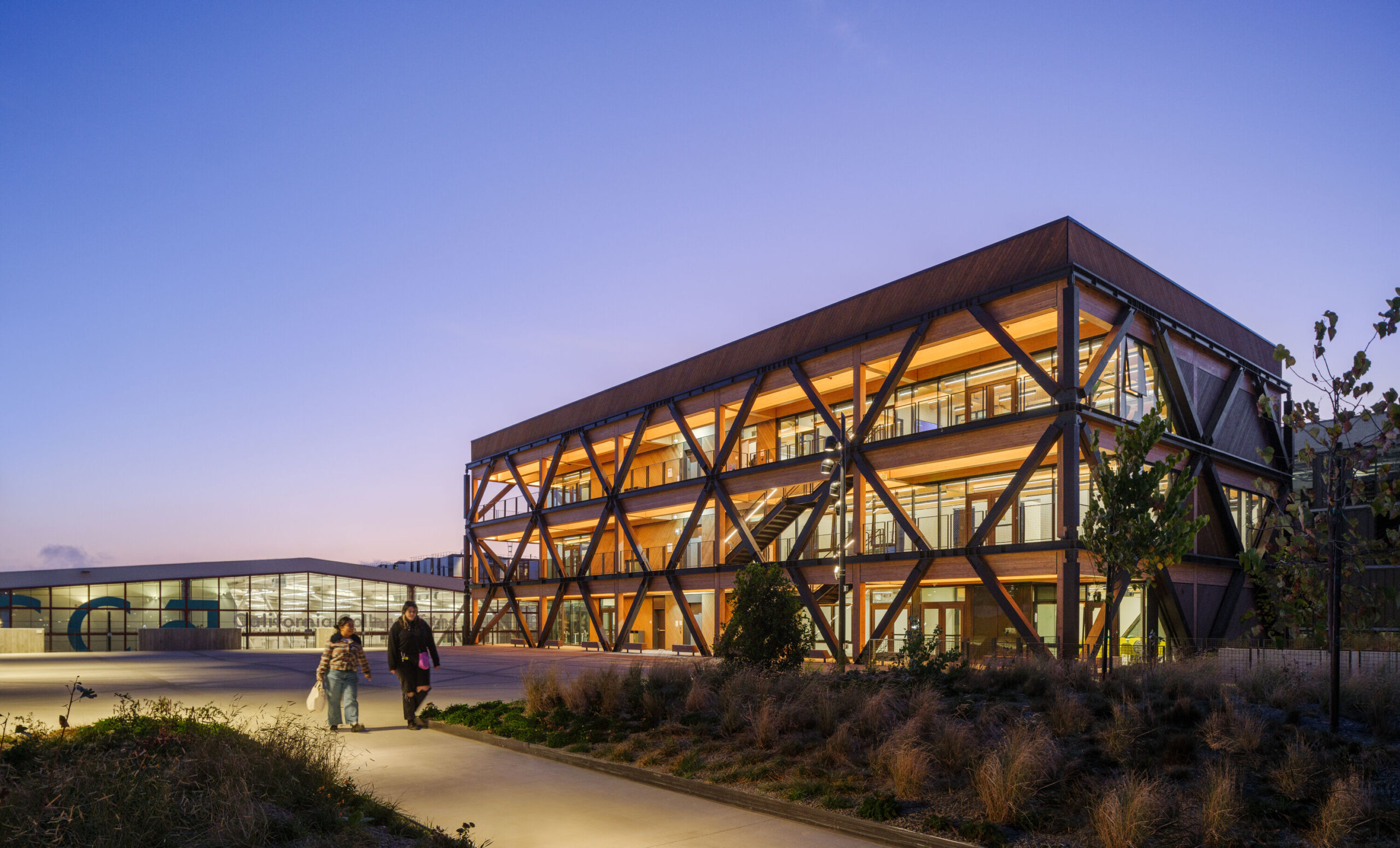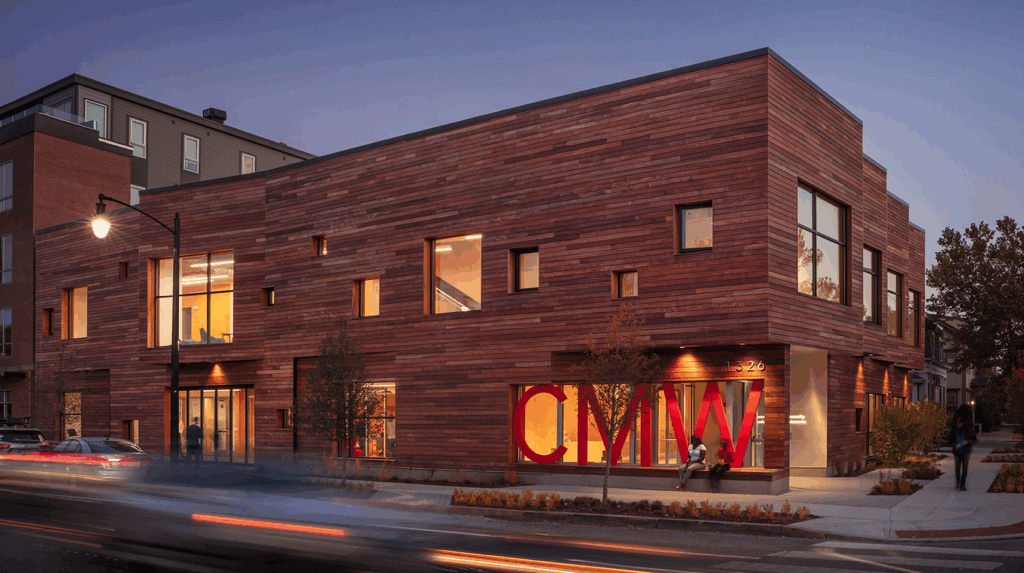Education, Mass Timber, Sustainability
Wood Innovation Research Lab
Assertive Architecture Meets Passive House in this One-of-a-Kind Research Facility
As a North American first, built to Passive House standards, this is a research lab that keenly demonstrates its purpose. The facility hosts the University of Northern British Columbia’s Master of Engineering in Integrated Wood Design, a curriculum that equips current and future industry professionals with cutting-edge expertise in sustainable wood design and construction. The nearly all-wood structure stands assertive and proud in the downtown core of Prince George, the university’s moniker proudly embossed into its bold cedar cladding.

This single-story glulam post-and-beam facility is the first industrial building in North America to be designed and certified to the Passive House standard, a remarkable achievement given the large, exposed surface areas of the building and the region’s often cold harsh winters.
As a state-of-the-art research facility for students and faculty, it includes well-equipped wood fabrication labs, classrooms, and office spaces, providing much-needed space for complex research and testing of structural wood products, connections, and assemblies.

Wood Use
Wood construction in all its forms—structural framing, studwork, panels and mass timber—is well suited for Passive House design. Rather than using conventional studs for the walls, the nearly 20 inches (500 millimetres) of mineral wool insulation required to meet the Passive House standard is fitted between vertical light-wood trusses that were custom built in a local factory. Interior sheathing materials for floor, wall and roof assemblies are left exposed.
The facility showcases that mass timber can be a compelling alternative to steel, typically used for industrial buildings in decades past. Mass timber was chosen for its high strength-to-weight ratio, thermal performance and ease of prefabrication. By using prefabricated mass timber components most of the work could be completed in a safe and controlled shop environment, particularly advantageous for the cold climate of this northern Canadian facility. Prefabrication also enabled greater precision and facilitated moisture control which reduced the risk of shrinkage or swelling of the wood components.
Environmental Impact
Buildings such as this, designed to the Passive House standard, have been shown to have reduced space heating and cooling demands, due to the high thermal performance of their envelopes. As a lightweight and flexible construction material, wood makes it easier for this building to be vapor permeable (breathable) and free of thermal bridging.
A life-cycle analysis determined that, due to its low energy demands, biofuel heating source and the carbon stored in its wood structure, the building generates 70 percent less greenhouse gas than a traditionally constructed industrial building designed to current code standards. In 2018, the Wood Innovation Research Lab officially achieved Passive House certification, the first educational-industrial building of its type in North America to meet the internationally recognized standard for energy efficiency.
Project Details
- Architect
- Stantec
- Size
- 12,992 ft2 (1,207 m2)
- Passive House Certifier
- Herz & Lang
- Location
- Prince George, BC
- Mass Timber Source
- Western Archrib
- Owner
- University of Northern British Columbia (UNBC)
- Structural Engineer
- Aspect Structural Engineers







